“Beauty struggles with privacy. It urges us to multiply it”
In this edition of the Weekender: musical plants, the relatability trap of TikTok, and the evolution of English
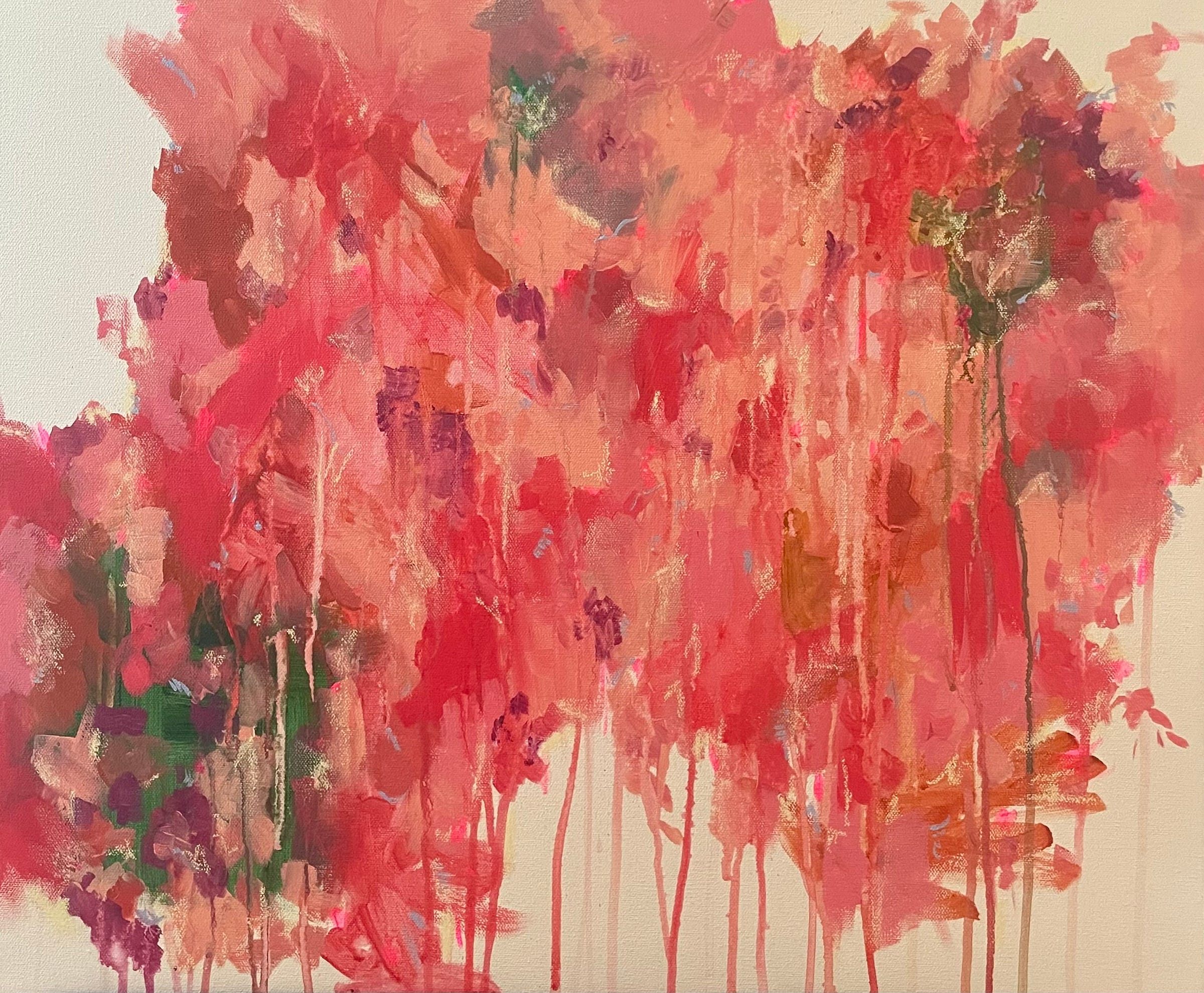
There’s a false note ringing through this week’s selections. Fictional bands make real music; successful influencers cosplay as 9-to-5ers; social climbers change language by trying to out-posh their betters; a woman’s words surpass the masterpieces they describe. Welcome to the ersatz edition.
FICTION
Representation
Anna’s Borgesian short story imagines what would happen if someone found the perfect way to render art in language.
Exhausting Beauty
—
inBeauty struggles with privacy. It urges us to multiply it—by means of ode, imitation, replica or fraud. If I find something beautiful and refuse to tell anyone about it, I feel that I have left some itch in me unscratched, or that something has been lost on me:
some marvelous experience
Frank O’Hara said,
which is not going to go wasted on me which is why I’m telling you about it.
Like pain, then, the feeling of beauty begs for expression, whether in words or tears. I have a distinct memory of walking through the Tate Modern and eavesdropping on a conversation between a couple. The man had visited the exhibition once before, and he seemed intent on impressing the woman he was with. They turned a corner into the next room. ‘This room made me cry,’ he said, with what I heard as a proud tone.
The woman didn’t seem impressed. Our words and tears never quite seem to get it right; beauty is a thing of its own unique kind. Wittgenstein says somewhere that flowers or animals that we find ugly always seem to look like something else: ‘that looks like a …’, we say. If an ugly thing is always something else, then, a beautiful thing must never be anything but itself. The desire to render a beautiful landscape in prose is as natural but as insatiable as the desire to capture a beautiful face in song. So beauty teaches us the disjointedness of the senses: that the world we see is not the world we hear, and that neither are the world we can write.
In the Metropolitan Museum of Art you can walk through a skylit hall that holds a collection of ancient Greek and Roman sculpture. You can see: the marble torso of a youth from the Hadrianic period; the remains of a copy of the so-called Apollo Lykeios; a head of Epikouros from the Roman Imperial period; a second-century statue of the Three Graces—and so on. You will not find a single reference to the bizarre and ultimately minor chapter in the museum’s history that began in this very room.
This is what I have been told: In the first weeks of 1991, a museum guard found himself talking to a woman stood by a marble portrait of the young Marcus Aurelius. The woman was holding a notebook and a pen, and the diligent lines of her handwriting had caught the guard’s curiosity. She explained to him, in what I imagine as an unplaceable accent, that she wanted to describe the portrait so that she wouldn’t forget what it had looked like. ‘Perhaps you could take a photograph,’ the guard said. The woman didn’t reply.
PAINTING
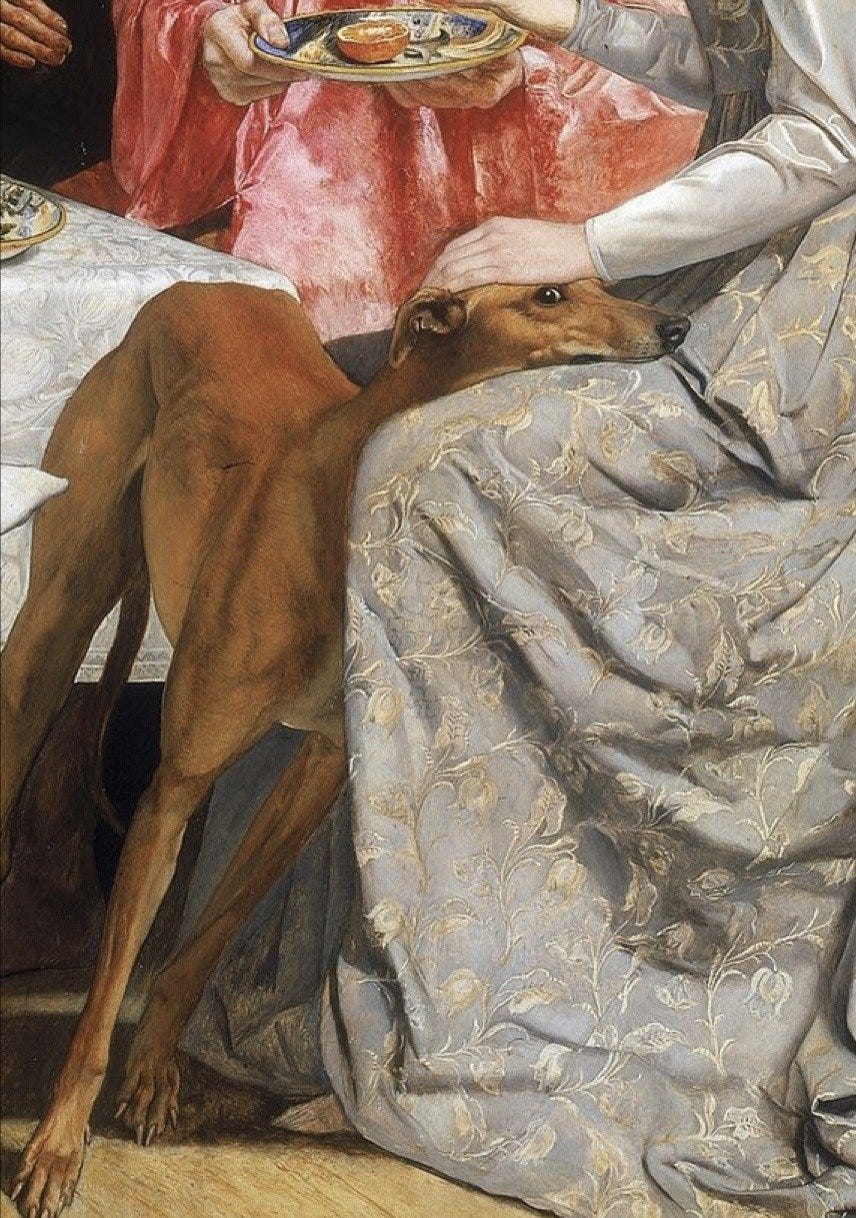
SOCIAL MEDIA
The relatability trap
Jenny G. Zhang examines the central irony of “day in the life” influencers: their success destroys the very relatability that brought them fame.
The 9-to-5 pretenders
—
inFor the past month, I’ve been watching a man called Hubs gradually lose his mind.
Hubs is not his name, probably; I don’t know what is. Hubs is what he goes by on TikTok, where, as one of scores of “day in my life” influencers, he posts tightly edited videos of himself hitting the gym, making protein shakes, staring at his computer, playing with his kid, and, until recently, working a 9-to-5 job at an office.
You may have seen Hubs—or videos like his—before on one social-media feed or another, even if you’re not one of the millions(?) of sickos like me who partake in the ritual of cognitive cleansing via watching internet strangers perform mundane tasks. Often, when such videos escape containment—from TikTok to, say, the open-season mayhem of Twitter—they are roundly mocked, held up as textbook illustrations of the monotonous, depressing rhythms of office jobs, unvarying routines, and contemporary life itself. Occasionally, a video may break from the standard cubicle course—a weekend in Chicago, perhaps one filled with a few drinks and actually pretty dope museums and yet another marg tower—although these, too, are susceptible to mockery, whether for their perceived “inauthenticity,” “privilege,” or fundamental “basic”-ness.
The 9-to-5 DIML, as a genre, is dull by design. While some viewers may watch with a sense of aspiration and envy—perhaps one day they, too, can land a desk job with a salary, benefits, and most importantly, the white-collar leisure to be able to film their own DIML TikToks—mostly these videos invite a comfortable, lethargic recognition. Fellow 9-to-5ers recognize themselves in the tedium, and draw comfort from the audiovisual affirmation that others, too, are working perfectly humdrum jobs, living completely ordinary lives, and that’s not only okay, but worthy of esteem. The growing aesthetic and spiritual appreciation for the quotidian 9-to-5 is an answer to widespread job insecurity and dissatisfaction, the erosion of the fantasy that is the American Dream, and all those years of “do what you love and you’ll never work a day in your life” propaganda, a siren song that has surely resulted in heaps of dashed dreams and too many creative-arts majors to count.
But the tacit agreement between 9-to-5 DIML content creator and fan—you and me, bud, we’re all just regular guys grinding our way to the weekend—is precarious. Its biggest threat is, ironically, how well the creator has embodied and sold that message. The more believable and relatable they appear, the more views their videos will attract; the more views their videos attract, the more followers they gain; until, eventually, they have gained enough followers to be able to quit the 9-to-5 that they made the basis of their persona, in order to pursue the new American Dream: becoming a full-time influencer.
SKETCH
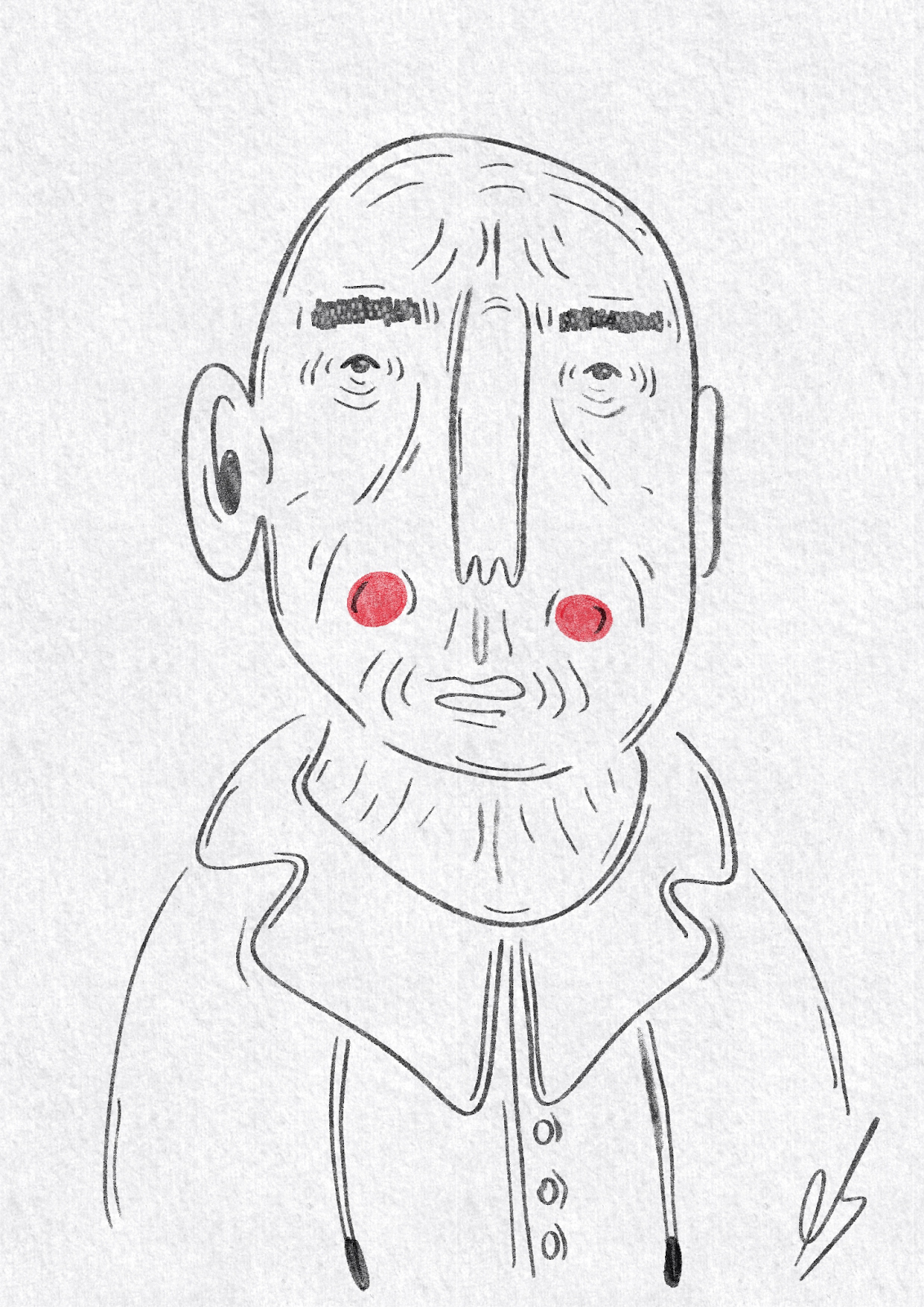
MUSIC
Hitmakers
As AI ratchets up concerns about authenticity in art, Nick Hornby’s collection of songs from fictional bands questions what it means for music to be “real.”
Made-up rock
—
inThe Monkees, as far as I know, were the first fictional pop band. They were put together by producers Bert Schneider, who later made Easy Rider, The Last Picture Show and Terence Malick’s gorgeous Days of Heaven, and Bob Rafelson, who directed several of Jack Nicholson’s early movies. Schneider and Rafelson wanted a TV show in the spirit of A Hard Day’s Night, so they advertised in a couple of trade magazines for “Folk & Roll Musicians”. Paul Mazursky and Larry Tucker wrote the pilot; they were later Oscar-nominated for their Bob & Carol & Ted & Alice screenplay.
Anyone of a certain age knows the names of the four folk & rollers they found. Peter Tork, a talented Greenwich Village multi-instrumentalist, was recommended to the producers by Stephen Stills. Mickey Dolenz already had a TV career, Davy Jones came from musical theatre after a brief spell as a jockey, Mike Nesmith (whose mother invented Liquid Paper) had already made a couple of records.
Given the criticism that the band and the show received for being fake, in an era when authenticity was supposed to be everything, it’s interesting to note how talented everyone concerned was. Compare and contrast with, say, Sid Vicious, who was basically a cartoon character. The records still sound great, and the songs have lasted: the Byrds’ satire ‘So You Want to Be a Rock ’n’ Roll Star’ isn’t belted out around football stadiums in the way that ‘Daydream Believer’ is. (Cheer up, Postecoglou, by the way.)
Anyway, this playlist is a tribute to all the ‘fictional’ music that came in the wake of the Monkees: music from Nashville the TV show and Nashville the movie, songs by Daisy Jones & the Six and Josie and the Pussycats, made-up characters singing made-up songs, except all songs are made up, and most pop stars are fabrications, so the distinction seems arbitrary. Look at this, on Google: “People also ask: Are any of the songs from Daisy Jones & the Six real?” Well, yes. All of them.
LOVE STORY
PHOTOGRAPHY
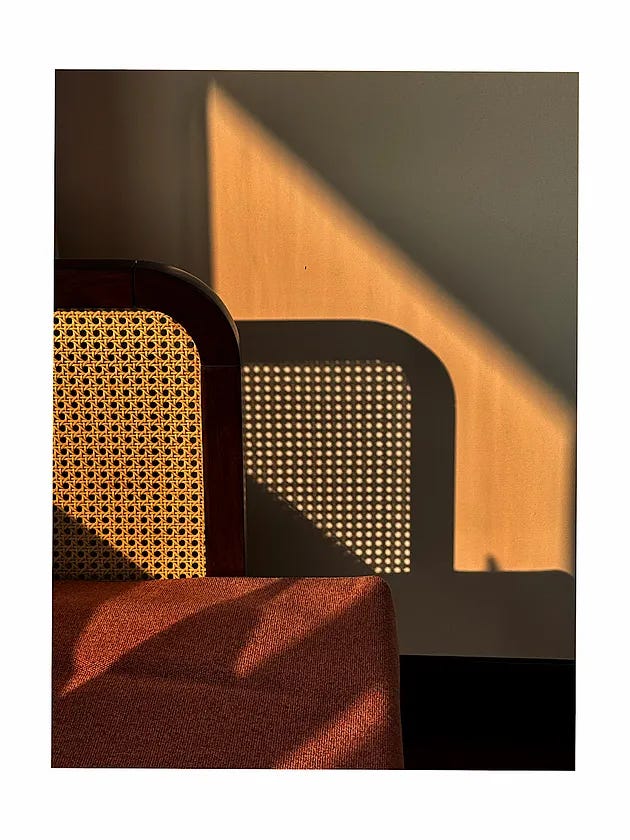
LINGUISTICS
Strivers
Colin Gorrie suggests that English’s Great Vowel Shift might be less about linguistic evolution and more about medieval social climbers desperately trying to out-posh the London elite.
How the Black Death reshaped English
—
inIn 1300, the capital was home to 100,000 people. Just 50 years later, in 1350, only 50,000 remained. It was desperate for new bodies to come and fill its workshops, markets, and guilds.
And come they did—in droves. Peasants and artisans from the Midlands and eastern counties, speaking a variety of regional dialects, flocked to the city, and London’s population began to swell again. Between 1350 and 1500 the population of London doubled thanks to these newcomers, returning to pre-Black Death levels. By 1600 it had doubled again, to 200,000 people. By 1700, it had shot up to 600,000 people.
But these weren’t just any immigrants. Many were socially ambitious craftspeople and merchants, eager to improve their standing in the complex urban hierarchy of medieval London. And this social climbing may be our key to understanding the Great Vowel Shift.
When people try to move up the social ladder, they often modify their speech to match what they perceive as prestigious. But without perfect models to follow, they sometimes overshoot the mark.
In late medieval London, this dynamic was supercharged. The city had become a melting pot of regional dialects, just as English was transitioning from a low-status language (at least, compared to French) to one with growing national prestige. Socially mobile immigrants, eager to sound like prestigious Londoners rather than provincial newcomers, began exaggerating certain speech features they associated with the upper classes.
For instance, on hearing Londoners pronounce words like “name” with a slightly different vowel than in their hometown pronunciation of “nahm”, newcomers might overcompensate by pushing the vowel even further toward “nehm”—inadvertently setting a new standard that eventually led to our modern pronunciation of “name.”
PHOTOGRAPHY
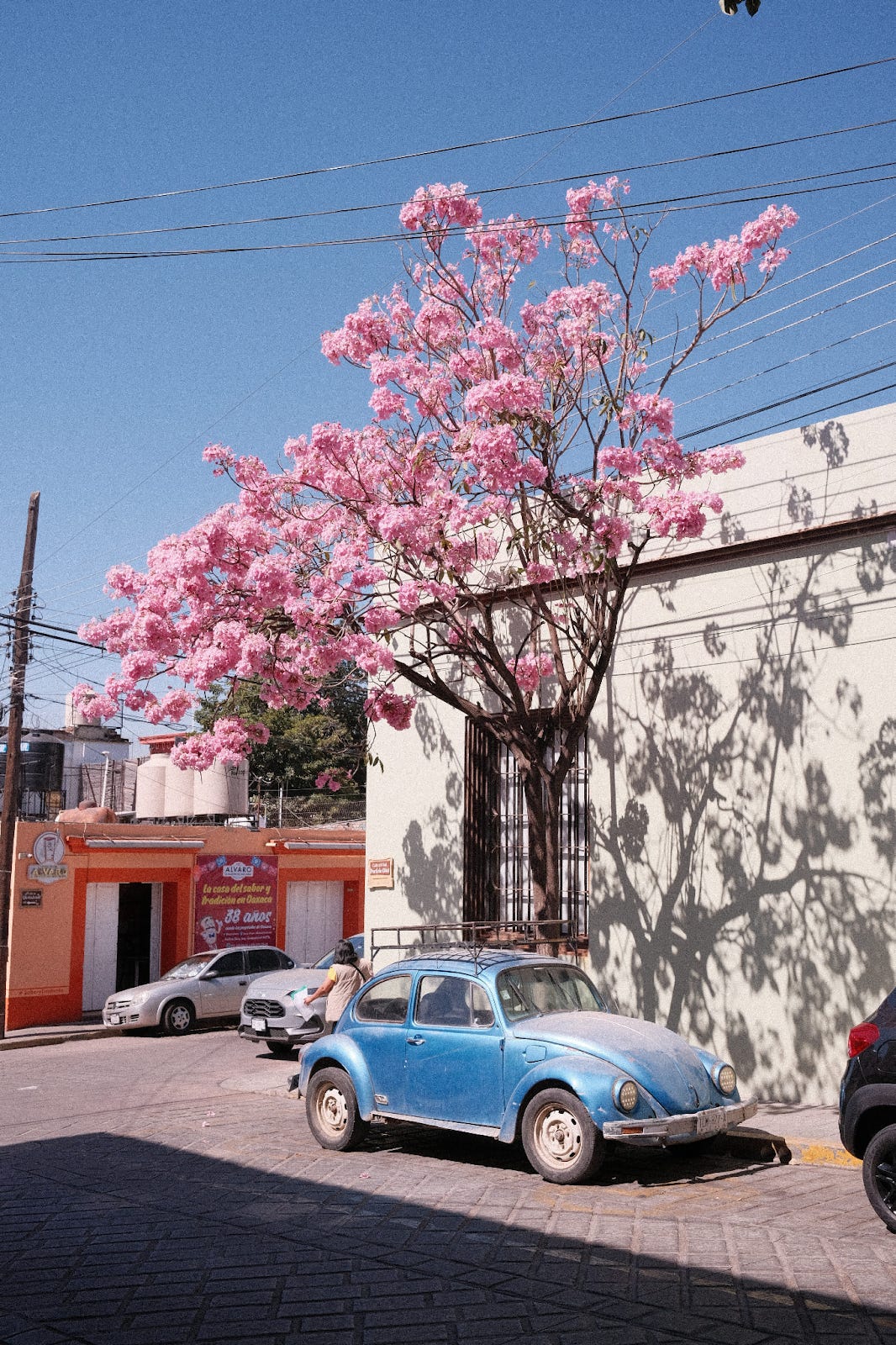
MEDITATION
Plant music
Tarun Nayar uses the subtle electrical signals of plants to create music. In this meditation, he invites you to imagine yourself as a plant—an experience scored by real plants’ bioelectrical patterns.
A Plant Meditation to Reconnect with Nature
—
inFOOD
A floral Basque cheesecake
Cèilidh captures the first days of spring in this lavender and honey Basque cheesecake, offering a preview of warmer days while still providing comfort for lingering cold afternoons.
Honey, Lavender, & Elderberry Basque Cheesecake
—
inWith spring seeping further into the cracks of each day, I am trying desperately to avoid jumping the gun on spring produce. March is one of my least favorite times of the year, an odd transitional period, during which I feel drastically disconnected. The days are slightly longer, yes, but still cold and grey. As a lover of regimentation, the blurred lines of winter and spring bring me discomfort. Nevertheless, I bake.
This is a simple, fragrant Basque cheesecake that boasts a delicate purple color and subtle floral sweetness. This bake is quick, and can be served room temperature or chilled (my preference). I’ve paired this cheesecake with a blueberry & rosemary compote (sorry I’ve been using so much rosemary recently!), but it would be delicious as is or with some gently whipped cream.
Substackers featured in this edition
Art & Photography:
, , , ,Video & Audio:
Writing:
, , , , ,Inspired by the writers featured in the Weekender? Creating your own Substack is just a few clicks away:
The Weekender is a weekly roundup of writing, ideas, art, audio, and video from the world of Substack. Posts are recommended by staff and readers, and curated and edited by Alex Posey out of Substack’s headquarters in San Francisco.
Got a Substack post to recommend? Tell us about it in the comments.























Thank you. My 13-year old son and I will travel to Chicago this May. You’ve reminded me to put the Art Museum high on the list. Such a gift to walk and talk amidst great works of beauty.
I also think of how criticism of a painting, a poem or prose can be like a violent attack against a flower. When someone puts forth an expression of beauty, the offering calls us to respect the mystery of its origin.
In a time of chaos and destruction, this was a delightful and calming read. Thank you!